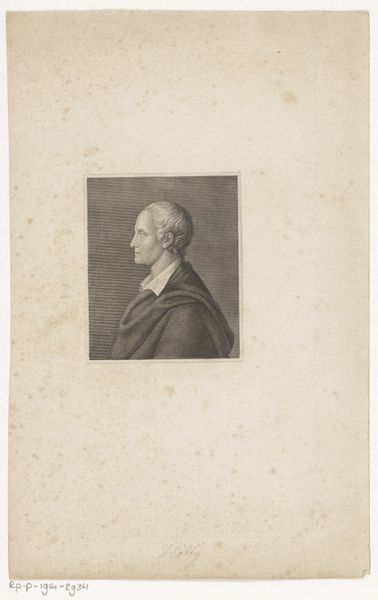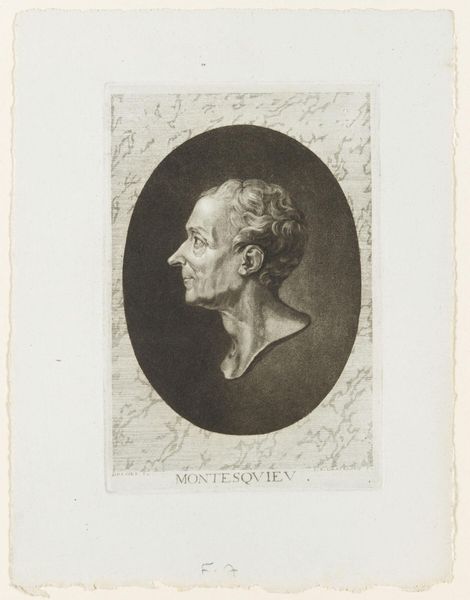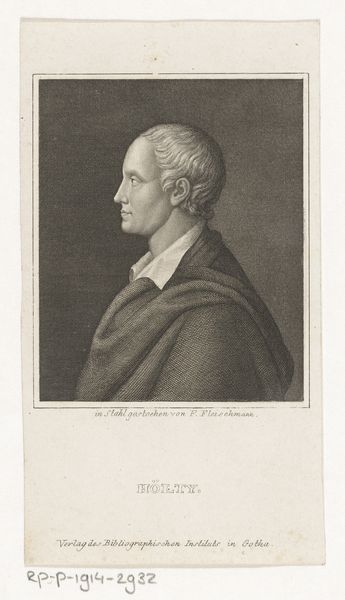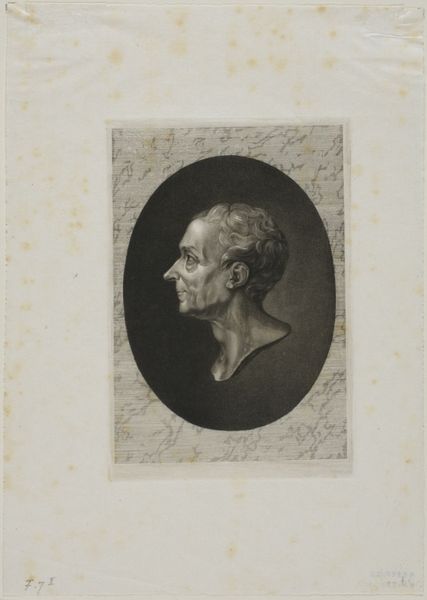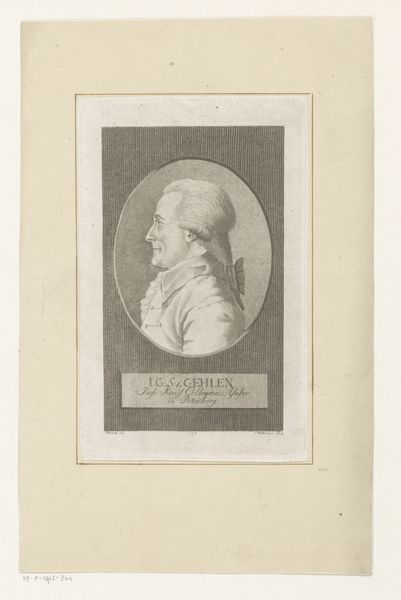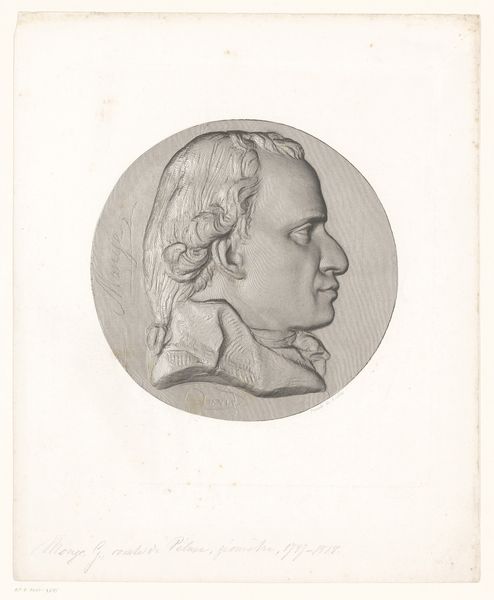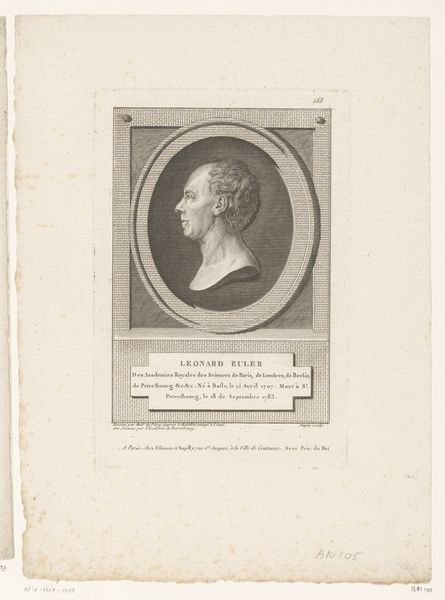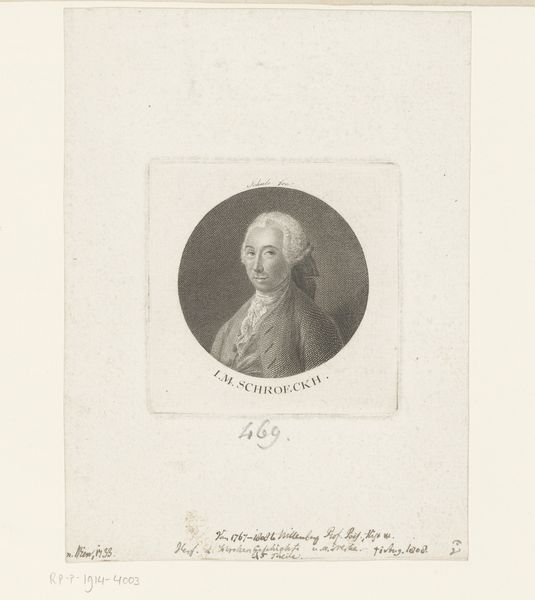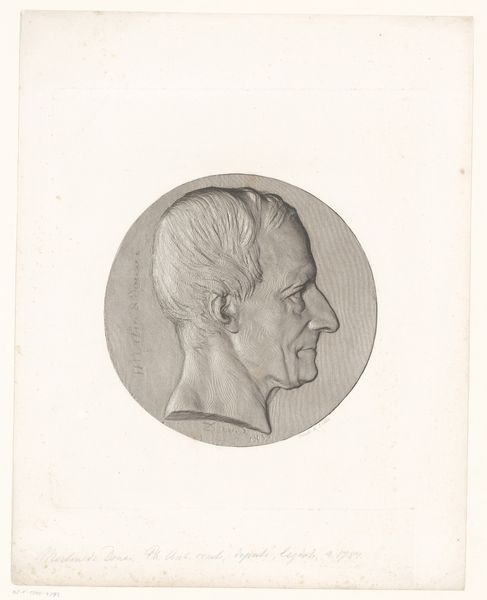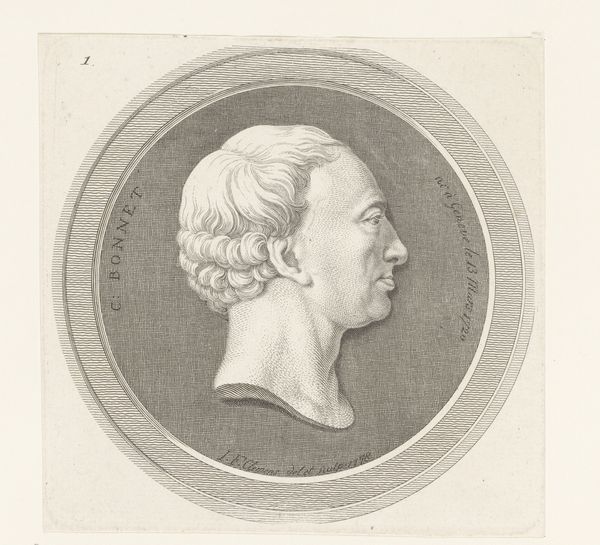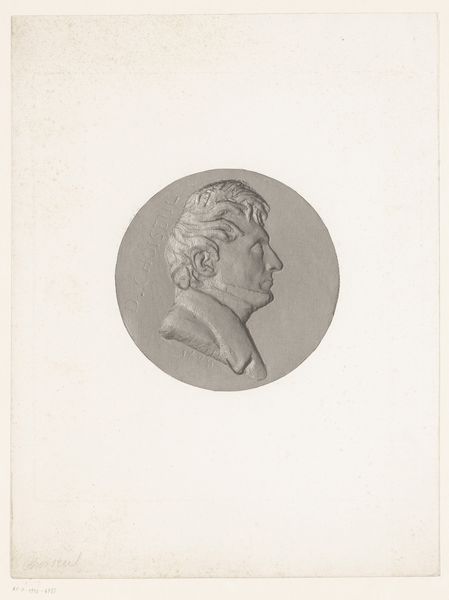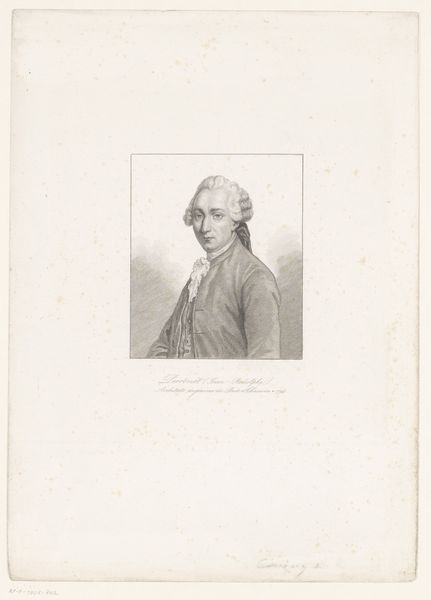
print, engraving
#
portrait
#
pencil drawn
#
neoclacissism
# print
#
old engraving style
#
academic-art
#
engraving
#
realism
Dimensions: height 266 mm, width 197 mm
Copyright: Rijks Museum: Open Domain
Georg Jacob Schratzenstaller made this portrait of Andreas Götz using etching and engraving. These are both printmaking techniques, and both involve the use of acid to bite into a metal plate, which is then inked and used to make impressions on paper. Engraving, the older of the two techniques, requires the artist to manually cut lines into the plate with a tool called a burin. Etching, by contrast, allows for a more fluid line. The etcher covers the plate with a waxy ground, draws through it to expose the metal, and then immerses the plate in acid. This allows for a less physically demanding method of production. Here, the combination of these techniques allows for both fine detail and tonal variation, resulting in a refined image. Printmaking such as this facilitated the wider distribution of images, aligning artistic production with the developing systems of commerce and consumption in the late 18th century. Rather than unique works of art, prints could be multiplied and disseminated widely. By understanding the materials and processes, we gain insight into the social context that shaped this portrait.
Comments
No comments
Be the first to comment and join the conversation on the ultimate creative platform.
